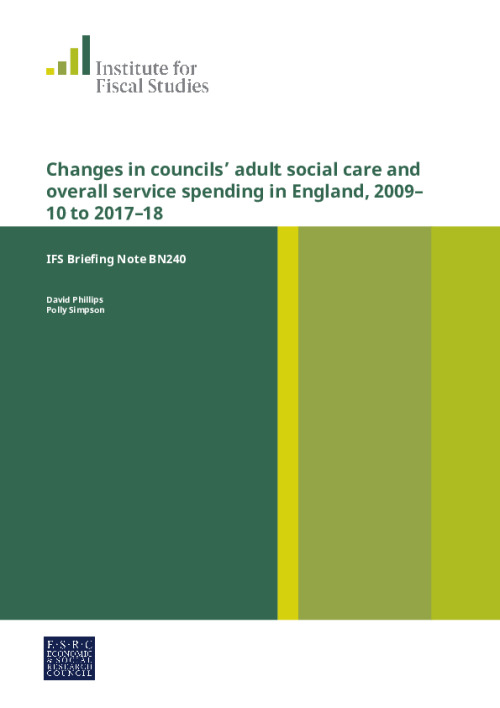A new IFS briefing note, funded by the IFS’s Local Government Finance and Devolution Consortium, looks at how council spending on adult social care and other services changed between 2009-10 and 2017-18.
The key findings of the briefing note are as follows:
- Councils’ spending on adult social care fell by 10% in real-terms between 2009–10 and 2014–15. Following new grant funding and council tax increases, spending increased by 7% between 2014–15 and 2017–18.
- Despite these recent increases, spending was budgeted to be 3% lower in 2017–18 than in 2009–10. As the population has grown over this period, this is equivalent to 9% lower per person. Increased ring-fenced social care funding in 2018-19 could enable councils to return spending to 2009-10 levels, but were this to happen spending per person would still be lower.
- Councils have chosen to protect social care relative to other service areas. Over the same time period, total service spending per person (including both social care and other services) fell by 24%. Council’s spending per person on services other than social care fell by 32%. As a result, social care has risen as a share of local authority service spending (excluding education and public health) from 34% in 2009–10 to 41% in 2017–18.
- Cuts have varied around the country and tended to be larger in more deprived areas. On average, the thirty councils with the highest levels of deprivation made cuts to adult social care of 17% per person, compared to 3% per person in the thirty areas with the lowest levels of deprivation.
- The pattern of cuts to social care mimics changes in overall council service spending, driven by cuts to council funding from central government. The thirty most deprived councils made an average cut to overall spending per person of 32%, compared to 17% in the thirty least deprived areas.










